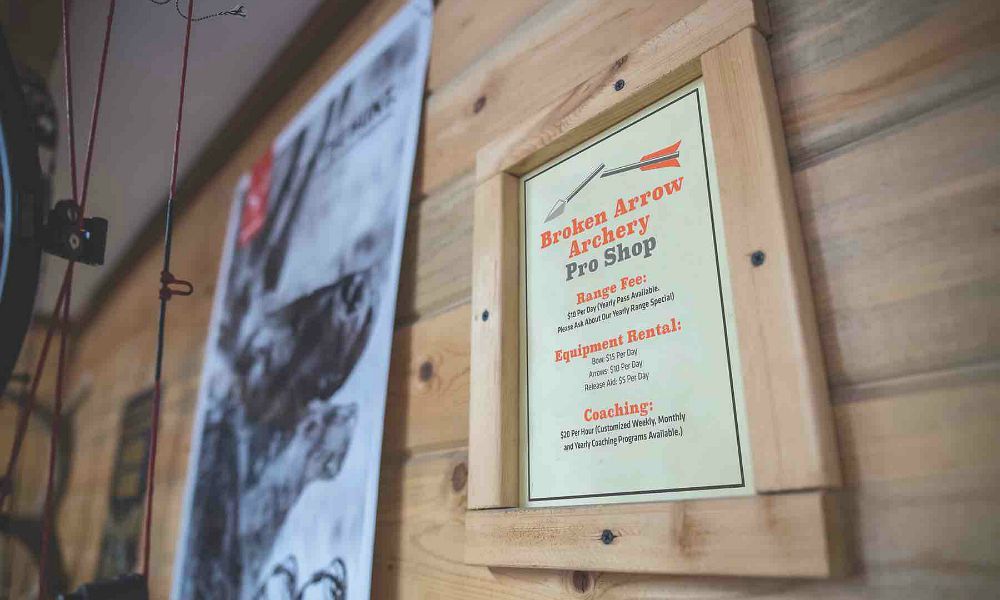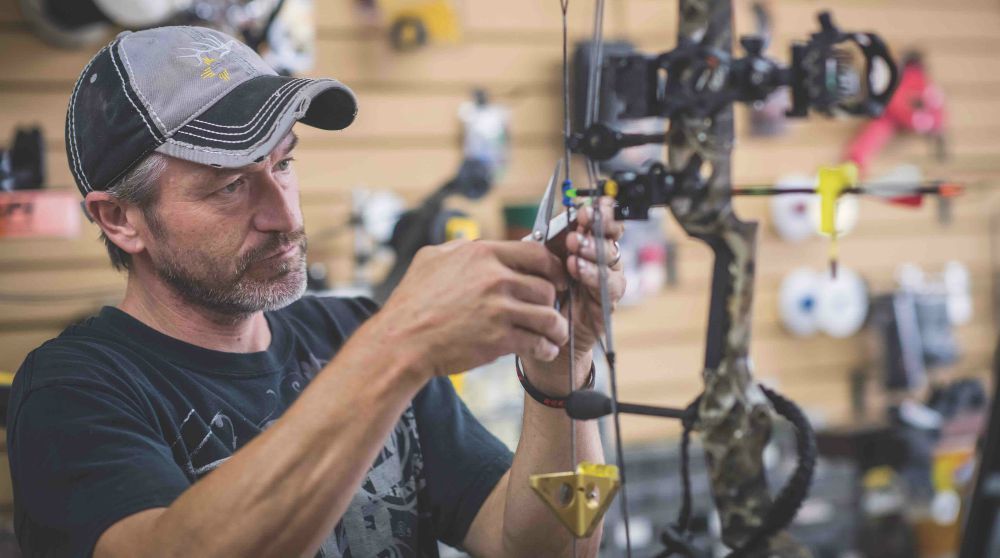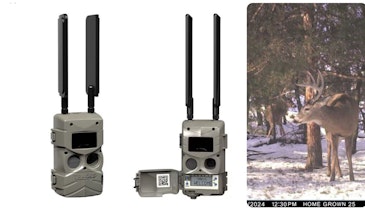Pricing is less about what you should charge and more about how you think about charging. Let me explain.
While working on the Retail Growth Initiative for the Archery Trade Association, I vividly recall talking to a woman at the National Archery Buyers Association meeting who said, “I can’t charge like that, I am a nice person.” She appeared in good shape, so I asked if she did yoga. She did. I then asked, “Is your yoga instructor nice, and does she charge?” She quickly got the message.
This “free mentality” ingrained in the industry must evolve to one more about value. Here are some ways to think about how to charge for and grow valuable and profitable services and programs.
Technical and Soft Skills Are Intertwined
Determining your value must start with evaluating your staff. The best technical person, be it a bow technician or archery instructor, is of no value if they aren’t also great at connecting with people. A bad experience won’t result in a return customer no matter how great the archery expertise.
I realize that great bow technicians are hard to find. However, it is possible to learn better customer service skills, and owners and managers must make that a priority. Improving customer service requires more focus on setting staff expectations, providing frequent feedback and demonstrating the personal skills for which you want them to aspire. The better your staff is at providing a great customer experience, the more people will be willing to pay for that experience. Improve your value by improving your staff.
What Have you Done to Grow Your Value?
The experience and expertise you provide is valuable. You may not be able to put a specific monetary figure on your expertise, but you should take stock of it as you consider setting or changing service prices.
How many years have you or your combined staff been providing service? Are there any special services you provide that aren’t available elsewhere? Have you attended a technical training or education program, like one of the manufacturer’s bow schools, instructor certification or workshops at the ATA Trade Show? If so, what was the investment in time and money?
After you or your employees receive any kind of special training or continuing education, post this information on your website, social media pages or other advertising. This way, your customers will know exactly what you are doing to continue developing the company’s expertise. Show your expertise and expand your skills, and your value will grow.
People Expect to pay When Value is Visible
Most retailers tell me their high-quality service spreads by word of mouth. Why not find ways to more visibly share that information?
For example, how many bows do you service in a year, including setting up new bows as well as servicing or repairing older ones? Post a tracker on your social media pages — updates at the end of the day or month about how many bows you got back out the door. Post a line-up of bows in the service area and let people know your team is hard at work. Take pictures of your bow technicians working on some equipment (smiling if their looking at the camera, of course) and share a little message about them. Take a screen shot of a great service review and post it on your social media pages. This demonstrates how valuable you are and how hard you work. These efforts also make it easier for people to accept paying more for services.

Research the Going Rates for Services and Programs
Of course you need to know what your competitors are charging. If you’ve done your value exercise and feel like you provide more value than your competition, then let your prices reflect that. And be sure to respond with confidence when people try to compare. Point to the bow tracker you’ve hung up, your years of experience, training certificates and then stand behind your service. If they go to the competitor, they’ll quickly find out who has more real value.
When thinking about classes, the first place to look is not at your archery competitors, but local recreation competitors. Research the local parks and recreation guide or community education programs and see what other leisure activities are charging. Determine the hourly rates in your area for programs such as yoga, tennis or paddle boarding. Charge at least what these activities are charging, if not more, especially if they are using public facilities and don’t own or rent. Offering archery for anything less than what is being charged for similar recreational activities devalues the sport as a whole.
Of course, consider what competitors are charging for classes and if you think they are too low then make sure your customers understand your exceptional value — again, from the value exercise above.
Consider the “Break Even”
In my 10-plus years working with archery retailers, I rarely come across one that fully practices perfect financials. How do you know what to charge if you don’t track initial inputs or expenses? If your fixed costs to operate per month is $5,000 and your range is half of your space, then you’ll need $2,500 in range income to break even. That’s 250 lane rentals per month (at $10/hour), or 65 per week.
If you add classes you’ll need to factor in other expenses such as staff, equipment rental, maintenance and program supplies. Let’s use a fictitious example to find a baseline.
- $45 instructor ($15/hour for class, set-up and take down)
- $40 prizes and supplies
- $20 equipment depreciation
- $50 for five lanes
- $155 total expenses
Adding a good base for equipment depreciation and lanes (to cover loan or space rental costs) should be factored in if you want real profit. Using the above figures equates to 10 people at $15.50 each just to break even. If you want to make a profit, you’ll have to fill the class as well as charge more than the baseline.
Let’s use service as another example. According to the Bureau of Labor Statistics, the average mechanic makes about $18 per hour (we all know good ones get more than that — and should). A full-time bow technician at the same rate would amount to a full-time salary of about $40,000 (I rounded up a bit). Just factoring salary, you’d need to have 67 paid (not free as a part of new bow purchase) bow tunes per month at a rate of $50 each. The more in demand your technician, the more value they have, the more you can charge and the more you can pay to keep them.
My examples aren’t perfect; I know there is much more that goes into your financial evaluations. The bottom line is: do the math. And more importantly, do the math daily, weekly, monthly and annually. Then develop goals accordingly. Share these reports with your staff and use them to discuss what is working and what isn’t. Let them provide input on how to improve the numbers as well. These numbers should also tell you where there is demand and/or missed opportunities. You can’t profit if you don’t have a place to start.

When to Offer Free or Reduced Prices
I am a strong advocate of “nothing should be free.” I encourage one exception, and that’s when you want to test a concept. For example, let’s say your bow technician is in such demand that you want to see if customers would be willing to set appointments for service — just like you do for your car. In this case, you might offer the first 20 customers a chance to make an appointment 25 percent off or maybe even more, especially if they are super loyal. Or, maybe you want to offer some sort of archery fitness class or new workshop and the first participants get 50 percent off. Let them know that the reduced price is in exchange for feedback. Then before you run your test, make sure you have your feedback questions ready. Determine what success would look like prior to implementing, and proceed or remove for specific reasons, and not just because “it just didn’t work.”
Another time when reduced rates might be considered is for range time during off-peak hours. Before doing so, however, ask your customers if changing the rates during the day would make a difference. Only if the response is an overwhelming “yes” should you consider it. If people aren’t moving from overloaded peak times to fill non-peak times for price, then it doesn’t make sense to lose the income.
I often see introductory classes being offered for free. In my opinion, this is not a good practice because it devalues your regular classes. Mike Parrella, who has written often for Martial Arts magazine about this very topic, described in a 2016 article how he once switched from free trials to paid trials. “The switch resulted in a loss of freeloaders,” Parrella wrote. He later described the real prospects as ones who pay. He gives a caveat, though: “As long as you bring the goods and give them the most amazing classes of their lives, they will convert.”
Billable Hours
In taking a different approach to pricing, the term “billable hours” struck me as another way to think about the topic. Now, I am not suggesting you charge like an attorney, but it might help if you can think like one temporarily. You will start seeing more value in your programs and services. Make a list of all of the things you COULD charge for, including everything that already provides income. Then draw a line through the things you WON’T charge for, and next to each write a specific reason why you won’t. For items for which you aren’t already charging but should be increased, write what is holding you back. A fear response should be noted and then tested by asking customers questions about how they would value the service. Fear is only good if you have to run from something.

Retail vs Non-Retail Value
Consider that your non-retail services and programs are actually where your value lies. Wayne Piersol from Archery Only in California spoke of the growing part of his business that has nothing to do with retail: lessons, corporate events and other experience activities. Because he can’t control sales online or pricing, and sales behavior of manufacturers and other retailers, he said, “We have changed our business plan to soften retail and become more aggressive on lane time, lessons, Archery Tag and everything you can’t get online.”
Add to your “billable hours” list a list of experiences you could be offering and aren’t. You may not have entered the business with a focus on these activities, but be aware that consumers are trending toward experiences and a sharing economy (like Uber) over owning “stuff.” Even if you don’t have a range, there are ways to get out in your community to offer lessons, events and activities. This is a perfect area to brainstorm with your staff. Hold weekly meetings and start planning ways to grow in the non-retail area. Then, make sure you’ve done your value exercise and research before you set your initial service prices.
Raising Pro Shop Service Prices
You’ve done your homework and realize that you haven’t set prices the way you should have. Assessment is the first step in making a change. There are a couple ways you can go about raising prices. The first and most obvious is to slowly raise them for everyone. Let customers know you’ll be reviewing them each year and adjusting accordingly. Be strong in your convictions and don’t apologize for recognizing your value. The people that appreciate your service won’t stop because it’s going to cost them a few more dollars, especially if you keep providing a topnotch experience each and every time.
Another option is to update your prices for new customers first. Let your loyal customers know what the new rates are and that they’ll be charged the same rates only after a period of time (say 6 months or a year). This lessens whatever shock they might feel, sets expectations and lets them know you’ve considered and appreciated their loyalty.
I Can Charge for That
Many in the archery industry don’t talk about pricing because they started for passion not for wealth. Passion is a necessary part of a great business. Knowing your value and financials is what determines long-term success.
My local recreation guide is filled with programs and classes that I’d be willing to pay for, that are of value to me because I’m not willing to try on my own. I even pay $25 to get locked in a room for an hour — I’m waiting for an archery-themed escape room. When you start believing you can charge for your valued service or a great class experience just like every other leisure activity does, a better financial position is sure to follow.
Images by John Hafner






